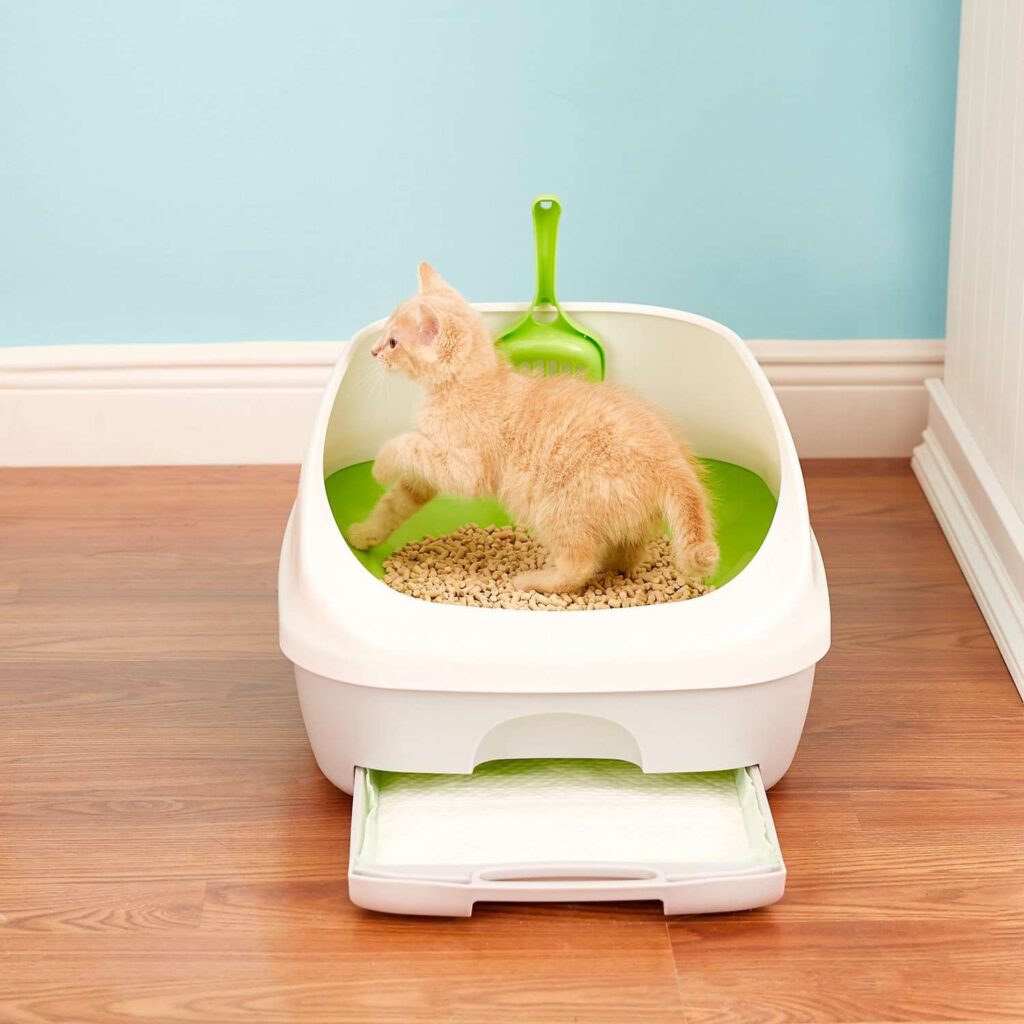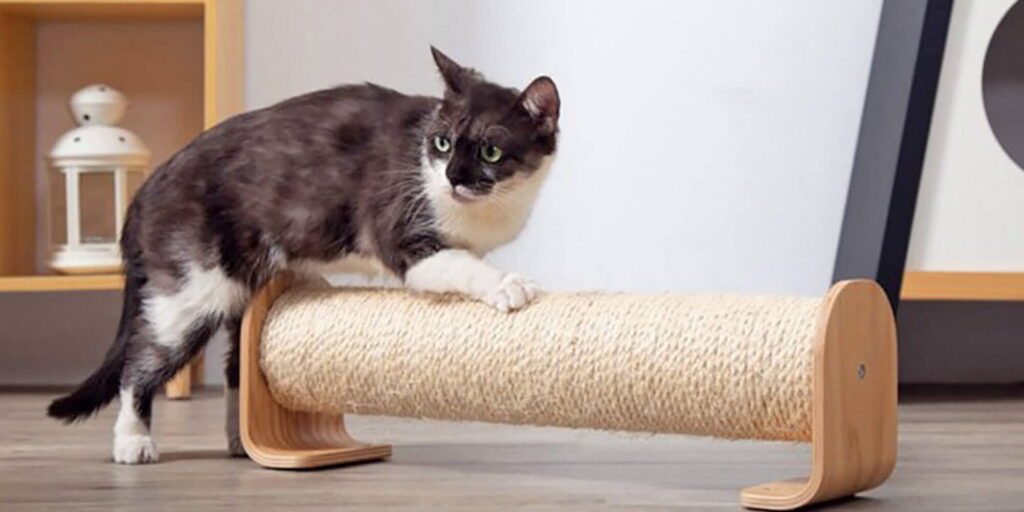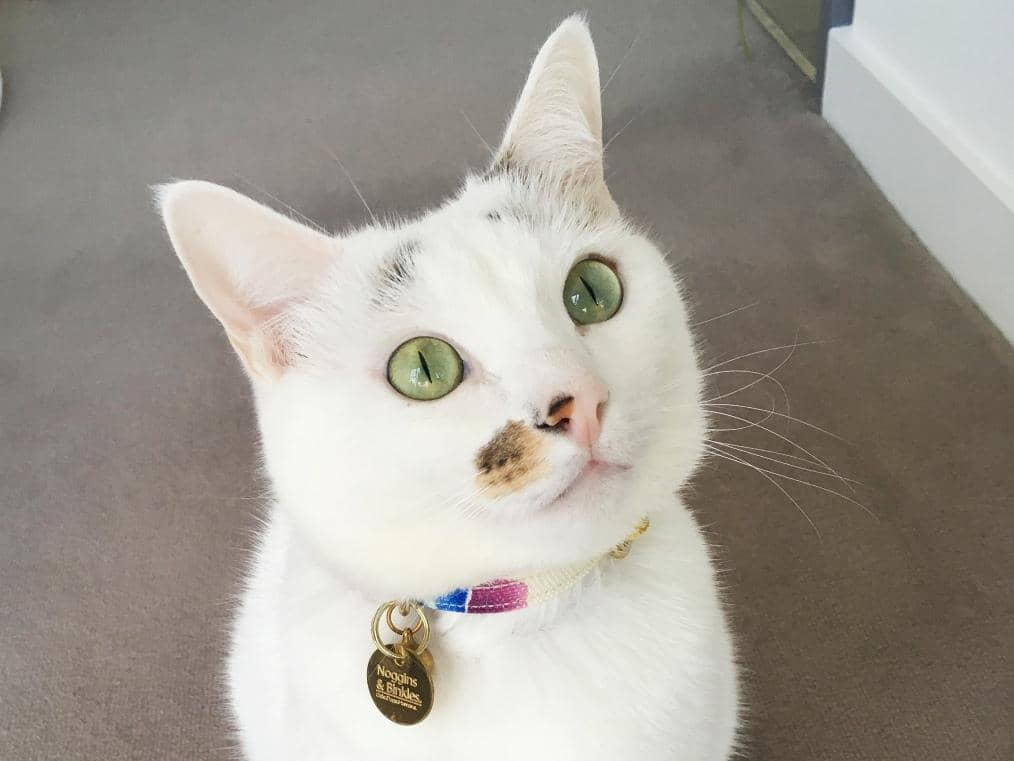So, you’re bringing home a cat? Lucky you! There’s no doubt you’re in for years of loving companionship. New cat owners often have lots of questions about how to ensure their cats are happy and comfortable. Here are a few things you should know about caring for your new feline buddy.
What Supplies Do I Need For My Cat?
Of course, every cat has preferences for toys, bedding, perches, litter boxes and more but the ASPCA recommends starting out with these basic supplies:
- Premium-brand cat food
- Food dish
- Water bowl
- Interactive toys
- Brush and comb
- Safety cat collar with ID tag
- Scratching post or scratching pad
- Litter boxes
- Litter
- Cat carrier
- Cat bed or box with warm blanket or towel
You’ll soon find out what your cat does and doesn’t like and you can make adjustments from there.

What Should I Feed My Cat?
There are so many types of food available – canned, dry, shredded, pate, grain free, and more that it can be overwhelming to a new cat parent. Visit Catfoodsite.com’s cat nutrition section for more information about food and nutrition. In the meantime, here are some basic recommendations from the ASPCA:
Adult Cats – Feed high quality food for one large or two smaller meals each day.
Kittens (6 to 12 weeks) – Feed high quality kitten food four times a day.
Kittens (3 to 6+ months) – Feed high quality kitten food three times a day.
For all cats and kittens, you can either feed specific meals, throwing away any leftover canned food after 30 minutes or free-feed dry food (keeping food out all the time).
And, of course, provide fresh, clean water at all times. Wash and refill water bowls daily.
Does My Cat Need a Scratching Post?
Scratching is a natural and necessary behavior for cats, says Dr. Tony Buffington of the Ohio State University Veterinary School’s Indoor Pet Initiative. Keep a close eye on their behavior and accommodate their preferences (within reason of course! Buffington explains that cats scratch to shed old nail cuticles, sharpen claws, stretch and leave scent marks. “Cats prefer to scratch on coarse materials they can shred,” Dr. Buffington says. Both vertical and horizontal scratching posts are available. But, Dr. Buffington cautions, a vertical post needs to be tall enough to support the cat’s length and stable enough to aid his weight so it doesn’t topple when your cat is using it. And, of course, Spaying and neutering is critical in preventing unwanted litters that contribute to the pet overpopulation problem.

Do I Need to Groom My Cat?
Cats are meticulous groomers and do a great job keeping themselves clean. However, they still need you to groom them. Adrienne Kawamura, owner of cat grooming franchise, City Kitty, says a consistent grooming schedule helps remove the dead undercoat of your cat’s fur and keeps your cat’s topcoat in good condition. “You will see less shedding, less dander, and less throwing up of hairballs,” Kawamura says. Don’t forget other aspects of grooming, she adds, like nail trimming, ear cleaning and bathing.
What’s the Best Way to Hold My Cat?
According to the ASPCA’s article on Cat Care, the best way to pick up your cat is to put one hand behind your cat’s front legs and the other hand under his behind. You might also see black “flea dirt,” which is flea excretement on your cat’s comb.
Should My Cat Be Indoors or Outdoors?
Most experts agree: Indoors is best. In her book, “The Cat Behavior Answer Book,” Arden Moore says, “Outdoor cats face increased risk of injury and illness. Many meet untimely ends under the wheels of cars or from animal attacks.” Make your cat’s home environment one that allows them to express their true nature, recommends Dr. Buffington of the Indoor Cat Initiative. This includes private spaces, places to hide, window perches, toys, scratching posts and more.
Does My Cat Need a Collar And ID?
The ASPCA agrees with the experts and urges cat guardians to keep their cats indoors only. But even indoor cats should wear a collar and an ID tag. An implanted microchip can also help insure that your cat is returned if she becomes lost. But remember to keep your microchip information updated so if your cat does get lost, whoever finds her can contact you immediately.

Where Should I Put the Litter Box?
All indoor cats need a litter box. Dr. Buffington recommends placing a litter box on each floor of a multi-level home. And, he says, litter boxes should be located in a private area away from interruption and noise. Make sure to scoop the litter box frequently. Dr. Buffington recommends scooping once a day and washing out the litter box completely with hot water once a week.
What’s the Best Way to Play With My Cat?
In his book, “Your Home, Their Territory,” Dr. Buffington says toys should resemble a cat’s prey. Some cats like to hunt rodents and others like to hunt birds or bugs. “You’ll want to offer different types of toys to see which your cat likes best,” advises Dr. Buffington. Playtime with your cat is a great opportunity to bond and it helps keep your cat active and from becoming bored…and destructive.
How Often Should My Cat Visit the Vet?
The American Association of Feline Practitioners (AAFP) recommends that cats should visit veterinarian at least once a year for a full examination. This regular care can help catch serious issues early on when treatment can be more effective. Senior cats older than 7 and cats with chronic conditions should visit the vet more often. Should you have a new kitten or cat, take him to the vet as soon as possible to discuss any issues and determine which, if any, vaccinations he needs.
How Can I Control Fleas?
Fleas are tiny parasites feed off of your cat, irritate the skin and can transmit tapeworm, says the ASPCA. Care usuallyfully check your cat once a week for fast moving brown spots (fleas) or white specks (flea eggs) in your cat’s fur. Always handle your cat gently and never pick up a cat by the scruff of the neck front legs without supporting his hindquarters. Unfortunately, if there are fleas on your cat, you will see fleas in your house, cautions the ASPCA, so you may need to use flea bombs or premise-control sprays and treat all animals in your house. The ASPCA altherefore urges you to consult your veterinarian before treating your cat for fleas to ensure you have an appropriate treatment plan that won’t harm your cat.
Should I Spay or Neuter My Cat?
Spaying your female cats (removing the ovaries and uterus) and neutering your male cats (removing the testicles) has many benefits, according to the ASPCA. Females ought to be spayed and males neutered by six months of age. Neutering a male can prevent urine spraying, decrease the urge to escape outside and look for a mate, and reduce fighting between males. Spaying a women helps prevent breast cancer and other medical issues.
Do I Need to Trim My Cat’s Nails?
Yes, Dr. Buffington advises in his book. “Regular nail trims can also reduce the intensity of scratching and of accidentally grazing someone.” Your vet or groomer can teach you how to safely trim your cat’s nails.
Once you have the basics down, you’ll quickly learn that cats have a variety of opinions that they’ll be pretty clear about! In his book, “Your Home, Their Territory,” Dr.) and you’ll have a happy, healthy friend for life.
Wondering about General Cat Care? Check it out on our latest post!
